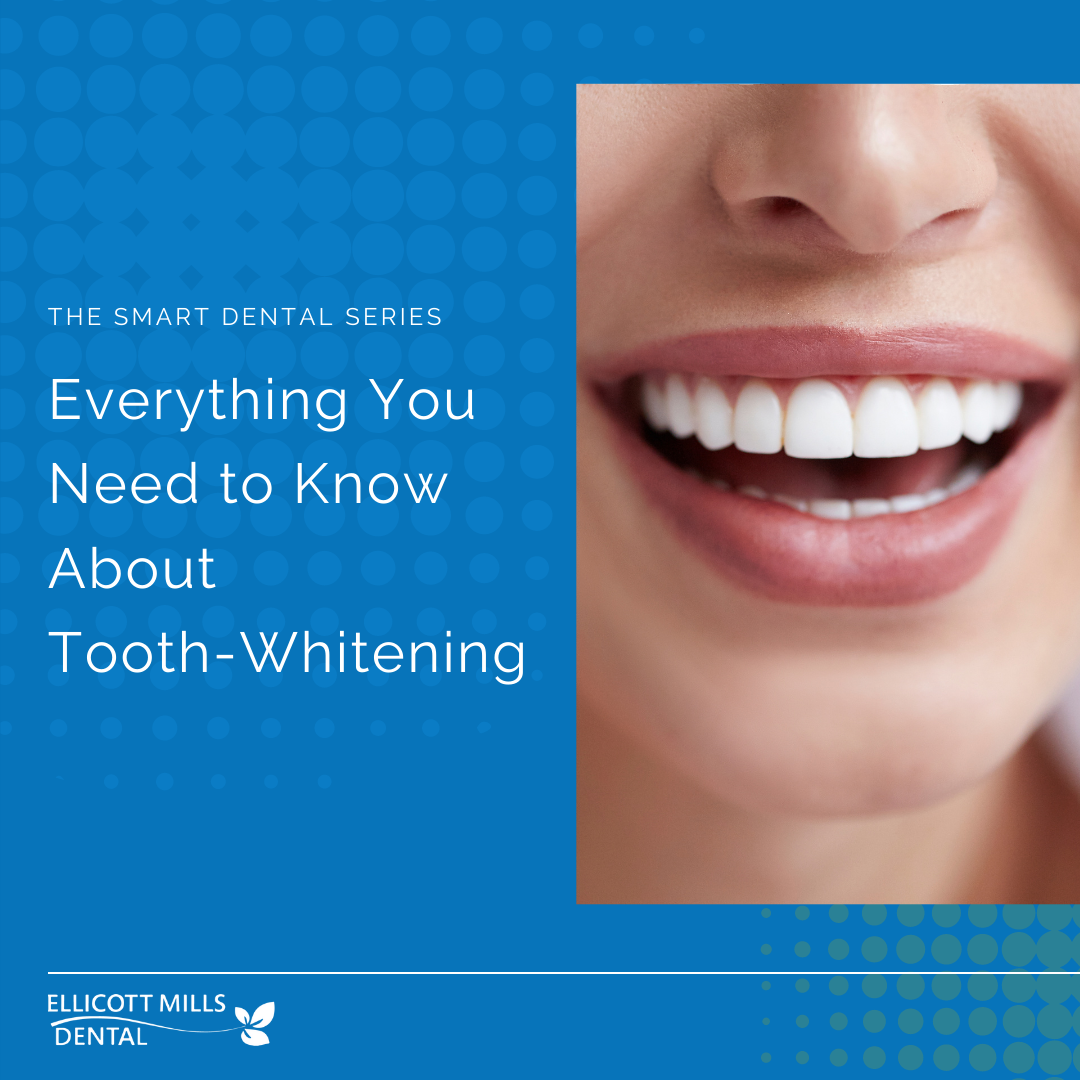Your tooth enamel is made up of calcium phosphate, which is a naturally white mineral. However, having white teeth doesn’t always necessarily mean that they’re 100% healthy, and having off-white, or yellowish teeth isn’t always an indicator of an unhealthy smile.
If yours aren’t as white as you’d prefer, there are plenty of reasons for wanting to whiten your teeth – maybe you have a job interview or an important event coming up and you want to look your best. Maybe your teeth are yellowed from coffee stains or smoking, and you want to brighten them up.
It all usually boils down to one thing though: A healthy-looking smile can increase our self confidence and self-esteem, and who doesn’t want that?
3 Common Reasons Your Teeth Aren’t Pearly-White
1. Dark Drinks
Coffee, red wine, and tea all contain chromogens (intense pigments) that attach to your enamel.

2. Tobacco Use
Tobacco contains Tar and Nicotine, which both contribute to dark and yellowish stains.

3. Aging
As we get older, our enamel gets thinner and reveals the yellowish dentin inside our teeth.

How Does Tooth-Whitening Work?
Most teeth-whitening products contain one of two bleaches:
- Hydrogen Peroxide
- Carbamide Peroxide
When applied to your teeth, these compounds break down the stains on your enamel to make the pigments less concentrated. Your teeth become brighter as a result.
What Methods Can I Use to Whiten My Teeth?
1. Using Stain-Removing Toothpastes
While all toothpastes are designed to remove plaque and stains from your teeth, there are specific formulas that contain additional polishing agents to promote a brighter smile.
(Pro-tip: check to make sure they have the ADA Seal of Approval before purchasing.)
These toothpastes don’t change the color of your teeth though, as they’re only meant to remove surface stains.

2. Bleaching At Your Dentist’s Office
This procedure usually only requires one office visit. Your dentist will professionally apply bleach to your teeth while utilizing a protective substance for your gums.

This process does change the color of your teeth, unlike using stain-removing toothpastes.
(Psst: We offer tooth-whitening services at Ellicott Mills Dental! Call or text us to learn more about them: 410-431-1768)
3. Over the Counter Bleaching Products (like white strips)
The concentration of bleach in these products is lower than the substance your dentist would use in the office, and can sometimes cause side effects like tooth-sensitivity. While these options can work well for some, we suggest consulting your dentist before using them to make sure that they’re right for you.

What Are the Side Effects of Tooth-Whitening?
Tooth Sensitivity:
One of the most common tooth-whitening side effects is tooth sensitivity. This results from peroxide seeping through the enamel and making contact with the soft layer of dentin, which can irritate the nerve of your tooth.
Enamel or Gum Damage:
Too much bleach can cause damage to your enamel or gums. To avoid this, make sure you follow the directions carefully on any over the counter products. It also doesn’t hurt to talk to your dentist about your tooth-whitening plans to ensure that you’re choosing the healthiest option for your smile.
Just because your teeth may not be perfectly white doesn’t automatically mean they aren’t healthy – but there’s nothing wrong with pursuing a brighter smile!
The best way to do this is to first identify the possible causes of your tooth-coloring, understand how the whitening process works, and talk to your dentist to help choose a method that works best for you. We can help with that!
For more information on tooth-whitening, visit the American Dental Association’s website.


